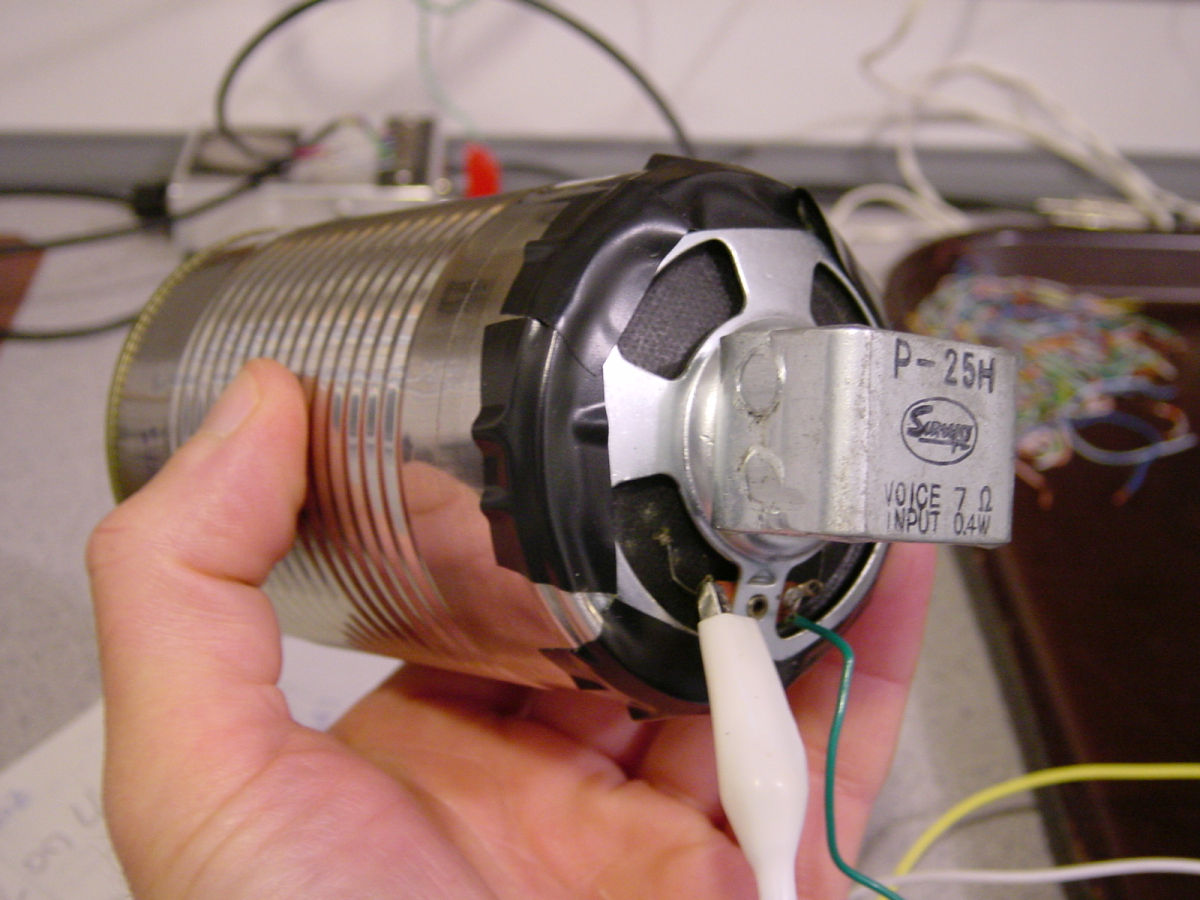This
double-sideband (DSB) radiotelephone transmitter is powered entirely by
the instantaneous (not stored) energy produced in the operator's
voice. The RF output power in my prototype falls within the range of 5
to 15mW. The circuit is essentially a high-level DSB
modulator/crystal-controlled RF oscillator.
To date, my
best DX QSO with this radio stands at 160km/100 miles (please see the
station log below).
Please click here to hear El Silbo on W1TXT's receiver, located near Hartford, Connecticut; a distance of 245km (152 miles). This recording was made at 1800Z, or 1400 local time. The QRN level was high, the propagation was poor at this time of day and there is distortion in the audio (I also had a rock in my shoe :o)
I'm saying, "CQ CQ AA1TJ Voice Powered Transmitter 5mW." I know it doesn't sound like much, but please bear in mind the signal that you hear was projected 245km by the instantaneous power of my voice. A comment about this recording posted to Bill, N2CQR's, Solder Smoke Blog made me smile.
"The audio samples are eerie; remind me of those audiograms recorded back in the 1860s...you know, the woman singing the French folksong snippet..."
Thank you,
Roberto. Oh yes, I know the clip that you're referring to. You can hear
it here.
10/26/09;
This afternoon I substituted an electret microphone (salvaged from an
old telephone) directly driving an LM386 audio frequency amplifier in
place of the voice-driven "loudspeaker" (SP1) shown in the above
schematic diagram. This produced a peak DSB output power of 100mW (50mW
in each sideband). I worked four stations on 75m this evening with this
setup. Please click here to hear a recording
of my signal made by W1PID (thanks Jim!) at a distance of 109km (the
louder signal that you hear at the end is Seabury, AA1MY).
Circuit Operation
Speaking into the permanent magnet loudspeaker, an audio frequency alternating current will appear at the secondary winding of transformer, T1. When the signal on the upper end of this winding turns positive, diode D1 will become reverse-biased (effectively disappearing from the circuit). At the same time diode D2 will become forward-biased, and thus clamp both the collector of Q2 and the lower end of the primary of transformer T2, to ground. The Colpitts crystal oscillator - centered around Q1 - will begin to oscillate (the Colpitts capacitive divider consists of C6 and the active transistor's internal base to emitter capacitance).
When the
audio frequency signal reverses polarity, Q1 becomes "clamped-off" and
RF oscillation will commence in the Colpitts circuit, now centered
around transistor Q2. An identical amplitude, but 180 degree
phase-shifted, RF signal will appear on the secondary of transformer
T2; as it must to insure proper DSB modulation.
Look Ma...No String!
El Silbo takes its name from Silbo; a whistled language (of sorts) that's used on the isle of La Gomera (Canary Islands) to communicate across wide mountain valleys. The best DX is apparently 2 miles, or just over 3km.
Some History
The idea for a voice-powered
radiotelephone transmitter appeared not long after transistors first
became widely available (my thanks to Roger, G3XBM, for unearthing
this!). I wonder what became of Mr. Bryan's AM radiotelephone
transmitter?
Time Magazine (October 17, 1955)
"The Army Signal Corps has developed a radio transmitter that needs no energy except electricity generated by the speaker's voice. The trick would be impossible if the set used vacuum tubes, but all it has is a single transistor, which needs only a faint current. When the speaker's voice makes the microphone vibrate, it generates enough current to operate the transistor and put the voice on the air. The present model, small enough to fit in a telephone mouthpiece, can transmit 600 ft. Later models, says George Bryan, developer of the set, should be good for a full mile.
Next step will be to
build a voice-powered receiver. It will store up voice-electricity
while the speaker is talking, then use it to pick up the answer while
he is listening. Bryan believes that the entire outfit can be tucked
into a plastic container no bigger than a matchbox. Mass-produced cost:
$20."
Please click here to view a photograph of George Bryan and his voice powered transmitter which appeared in the December 1955 issue of Popular Science Magazine. You may also click here to download the United States patent issued to Mr. Bryan for this device.
El Silbo Logbook
Date
Station
His/Mine
QTH
Distance
My Power
Comments
10/13/09 W1VZR 57/459 Limerick, ME 160km 2.5mW Early ckt; resorted to "mouth CW"
10/22/09 AA1MY 57/33 Bethel, ME 160km 5mW 1st skywave voice-pwr fone QSO!
10/22/09 W1PID 59/54 Sanbornton, NH 109km 5mW Horrendous QRN; Fabulous QSO!
